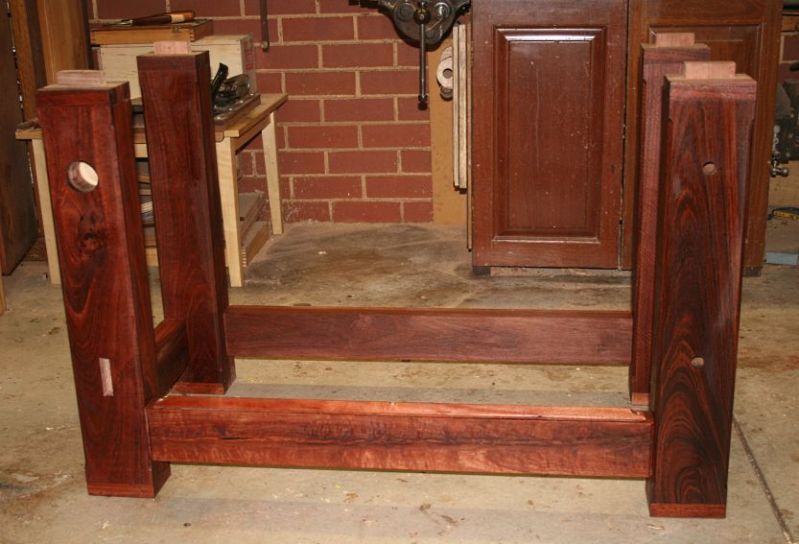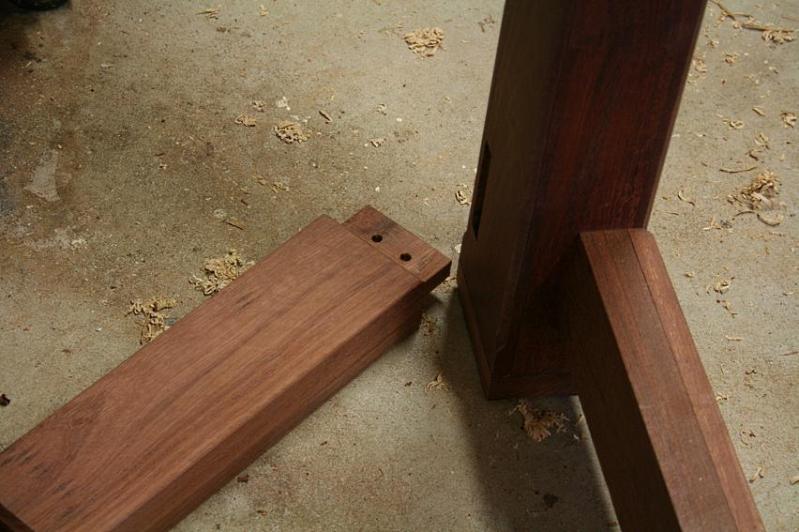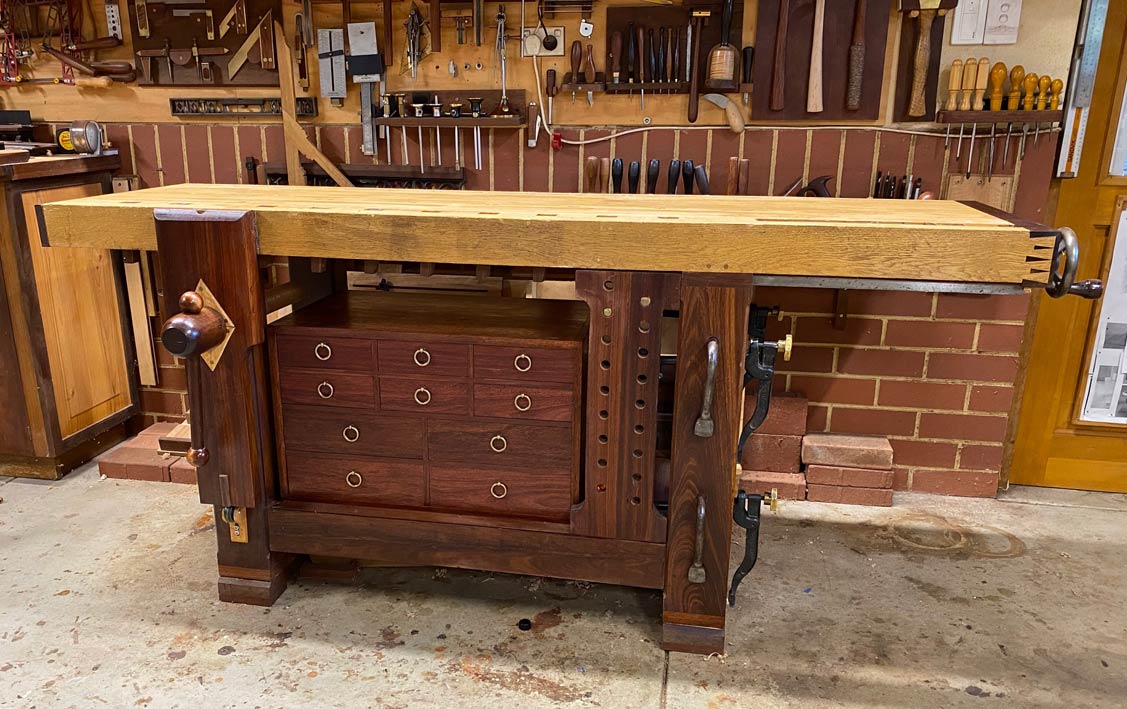Phil Pascoe
Established Member
It's not a silly question at all - if the the only thing preventing racking is tenons through the top why have a frame? Just legs will be adequate.

Hi JamesThe tenons into the bench top look a little short to me. I would make them 100mm others will have a better idea.
Cheers James

From most of your replies, I have found out that my tenons are too short. I made them as long as I was allowed so that I could saw out 4 tenons before lamination from the middle board of the leg. Sawing out 4 tenons out of 16 in total is not much of a help, so I can move the legs closer to each other and make the tenons longer (as the boards are already sawn to approximate length).
My original tenons did have only 1 top shoulder and no shoulders on their sides. Do tenons always need to have shoulders on their sides or they can also be as wide as a thickness of a board?
How far from the front of the leg should the mortice be so that I do not break the edge when prying?
Thank you.












Only if you've thoroughly investigated the traditional offerings first. The first and foremost rule of good design is to copy.Each to their own regarding bench design.
It's two bean cans with melted lead, quite posh enough as they are! About 3 kg each I seem to recall. Also have a nice posh trad 5kg cast iron weight and a 6kg piece of railway line. I call them my "gravity clamps" and use them a lot, sometimes with my beam clamp gizmo.We all have our own reasons, might try and make a posh version of Jacob's tin of lead beans someday.
I'm sure someone like CS is on it already though, likely titled "The Bachelors bench"
On your drawing your rails are made up of two pieces of wood glued together, the shorter outer one forms the shoulder on that side and with the massiveness of the whole structure I think you can safely not have a shoulder on the other side- sure it won’t distort!From most of your replies, I have found out that my tenons are too short. I made them as long as I was allowed so that I could saw out 4 tenons before lamination from the middle board of the leg. Sawing out 4 tenons out of 16 in total is not much of a help, so I can move the legs closer to each other and make the tenons longer (as the boards are already sawn to approximate length).
My original tenons did have only 1 top shoulder and no shoulders on their sides. Do tenons always need to have shoulders on their sides or they can also be as wide as a thickness of a board?
How far from the front of the leg should the mortice be so that I do not break the edge when prying?
Thank you.

Time to launch my bench picture again for the 100th time! This is an example of the standard British bench as used by the trade, school, colleges everywhere, in the old days when woodwork was a major industry. For some reason it has gone right out of fashion and doesn't even feature in the various modern books on the subject.
But it is a simple design, resolves all the "bench" problems, easy and cheap to build, practical.
Because its been expunged from the record everybody building a bench nowadays thinks they've got to design their own, and they get ever more ingenious, over-built and complicated. Some designs involve two or three times as much material as needed and will be incredibly heavy, for no obvious purpose.
Back to basics - especially for first benches, which if you get right will probably see you out, you wont need another one!
View attachment 118195
"Joinery & Carpentry " ed. Richard Greenhalgh, New Era Publications. Excellent 6 volume set - one of the best old woodwork text books you can get, from before the age of gadgets, jigs, digital devices and other nonsense!very similar to the one I made, what book is that from jacob?
Enter your email address to join: